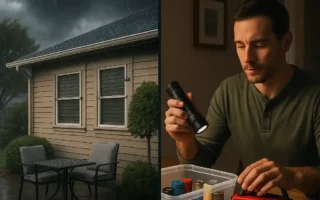Renovating your home is a great way to improve your space, but it can leave behind a big mess. Broken tiles, old wood, and leftover materials pile up quickly.
Knowing how to dispose of this debris the right way is important for safety and the environment. With a simple plan on renovation debris, you can clean up without stress. Ready to learn how to handle renovation waste the smart way? Let’s get started!
Know What You’re Throwing Away
Before you begin disposal, take a moment to sort through your renovation debris. Not all waste is the same. Some materials can be recycled or reused, while others must go to a landfill or special disposal site.
Common debris includes wood, drywall, concrete, bricks, insulation, and old fixtures. If your project involves electrical wiring, paint, or chemicals, those materials may need special handling. Knowing what you have helps you choose the best disposal method and avoid any local fines or issues.
Separate Reusable and Recyclable Materials
Some of your renovation waste may still be useful. Wood scraps, cabinet parts, doors, and even some tiles can be reused for other projects. Habitat for Humanity ReStores and local donation centers may accept certain leftover building materials in good condition.
Many areas also offer recycling services for metal, concrete, and untreated wood. Check with your city or county for drop-off sites or pick-up programs. Keeping recyclables out of the landfill helps protect the environment and reduces your overall disposal load.
Rent a Dumpster for Larger Projects
For big renovations, like tearing out a bathroom or replacing a roof, you’ll likely generate too much waste for regular collection. In these cases, renting a dumpster is a smart choice. It gives you a single place to toss everything and keeps your work area clean and safe.
There are affordable dumpster rentals available in most areas, with sizes to fit different project needs. The company drops off the dumpster and picks it up when you’re done. It saves time and effort compared to multiple trips to the landfill. Just make sure you know what can and can’t go in the dumpster, hazardous waste is not allowed.
Be Careful With Hazardous Materials
Some renovation debris needs special care. Items like old paint, asbestos, fluorescent bulbs, batteries, and chemical cleaners must be handled separately. These are considered hazardous and can’t go in regular trash or dumpsters.
Your local waste authority will have drop-off events or special collection days for these items. It’s important to follow the rules to avoid health risks and protect the environment. Never mix hazardous waste with regular debris.
Clean Up Your Space Safely
Once the renovation is done, do a final sweep of the area. Wear gloves and proper shoes to avoid injuries from nails, glass, or sharp edges. Use a broom or vacuum to pick up dust and smaller pieces. Store leftover materials properly or dispose of them if you won’t use them.
A clean and safe workspace means your home is ready to enjoy again. It also shows that your renovation project is truly complete.
Dispose Household Renovation Debris Now
Properly getting rid of renovation debris keeps your home safe and your project on track. By sorting your waste, reusing what you can, and using the right disposal methods, cleanup becomes simple.
Whether your project is big or small, careful disposal helps protect your health and the environment. Take the time to clean up the right way and enjoy your newly improved space with peace of mind.
You may also read (how to choose the right contractor for your home renovation).




